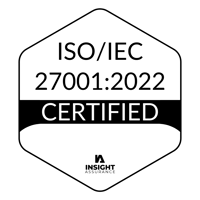The Role of Health Benefits When Becoming an Employer of Choice

Today’s employees have a wider variety of professional options than at any point in history. In 2021, 51% of U.S. employees were actively seeking new job opportunities as a result of burnout, the accessibility of remote work, and collective disruptions driven by the COVID-19 pandemic. As a result, high-performing employees now can exert greater control over the job market, where demand for leading professionals outweighs supply.
Despite these challenges, employers who can differentiate themselves in key talent markets can gain a competitive advantage. Specifically, any employer could become an employer of choice in their respective fields, securing top talents where others cannot. In 2022, more U.S. companies will work to meet unique employee demands for workplace environments with this specific goal in mind.
An employer of choice is a company that workers prioritize when faced with similar options in the job market and becoming an employer choice is about more than paying high salaries.
Steps to Achieving Your Recruitment and Retention Objectives
To begin, employers must take a more holistic view of how they attract and retain top talent. In today’s labor environment, optimizing recruitment and retention efforts is essential, but too often companies fail to prioritize employee advantages that make them desirable employers in the first place.
Health and wellness benefits have been identified to be the most critical benefits when considering employees’ wellbeing; they also can be the most flexible, making them ideal areas for improvement. With this in mind, here are five steps employers can take on their journey to becoming an employer of choice.
1. Define Your Ideal Employee
Becoming an employer of choice to your ideal employees begins with defining an “ideal employee” in the first place. Begin by identifying the personal qualities and professional capabilities of your ideal employees. Starting with a review of your existing employees who are successful and who have remained with the company for long periods of time is a good way to begin building your understanding.
Then, consider what these employees’ unique needs are so that you can accommodate them as their employer. These include health, dental, and retirement plans but may also include unique and desirable benefits not offered by less competitive employers. Examples include childcare services, fitness memberships, or first-dollar health benefits coverage that pays for the upfront costs of healthcare.
2. Listen to Your Existing Employees
Your existing employees are your best resource in determining what is helping or hurting your efforts to become an employer of choice. As you interview your best and most loyal employees, consider the needs of all your employees—both met and unmet by you as their employer—and how you can improve the ways in which you engage employees on their terms. Many of their needs or desires will be out of your reach, but you may also identify some consistencies to which you can respond in unique and competitive ways.
3. Prioritize and Support Mental Health
Today’s employers of choice provide mental health benefits, and they also set a cultural agenda to support mental health and wellness within their organizations. Indeed, mental health can make or break that status. Half of millennial workers and 75% of Gen-Z workers claimed they had left past roles for the sake of their mental health, at least in part.
4. Personalize Benefits Options
Personalized benefits became especially popular in 2021 when fitness, mental health, and childcare benefits become more in demand. Many of these benefits are offered to employees on an on-demand basis now, as BenefitsPro describes. The authors expect this “menu” approach to benefits will become more common among fundamental benefits, including health, dental, and retirement.
5. Market Yourself as an Employer of Choice
"In 2022, companies will need to effectively communicate benefits, perks, and most importantly culture to attract talent and stay viable,” as BenefitsPro describes. With this in mind, don’t hesitate to share all your newfound advantages via job advertisements, online videos, networking events, and even PR.
But becoming an employer of choice goes beyond these efforts alone. You must also achieve a deeper understanding of how you perform against other employers in your market. “Candidates—and your current employees—are looking around to see how other companies treat their employees,” explains HRM America. “To get a sense of what your competition is doing, network with managers from other companies, look at competitors’ web pages, and talk to employees and candidates about their observations.”
Start by Challenging Yourself Internally
You can’t determine if you’ve become an employer of choice until you have positioned yourself competitively in the eyes of your ideal employees. But real progress must begin internally—by achieving a deeper understanding of employees’ priorities and challenging your internal stakeholders to invest in more competitive benefits. It’s when your employees and stakeholders become true evangelists that you can be certain you’re on the right track.
Nonstop is Your Health Benefits Partner in Becoming an Employer of Choice
Nonstop Administration and Insurance Services, Inc. is a differentiator for employers who put their people first: improving their access to primary and preventative care through its first-dollar coverage approach to health benefits that doesn’t require any carrier or broker changes. Please visit us at nonstophealthcom/better-benefits or reach out to us at info@nonstophealthcom to compare your current plan design to Nonstop’s first-dollar coverage approach.
The information and materials herein are provided for general information purposes only and are not intended to constitute legal or other advice or opinions on any specific matters and are not intended to replace the advice of a qualified attorney, plan provider or other professional advisor. This information has been taken from sources believed to be reliable, but there is no guarantee as to its accuracy. This communication does not constitute a legal opinion and should not be relied upon for any purpose other than its intended educational purpose.
.png?width=1501&name=Nonstop_Logo-22-Horizontal%20(2).png)


